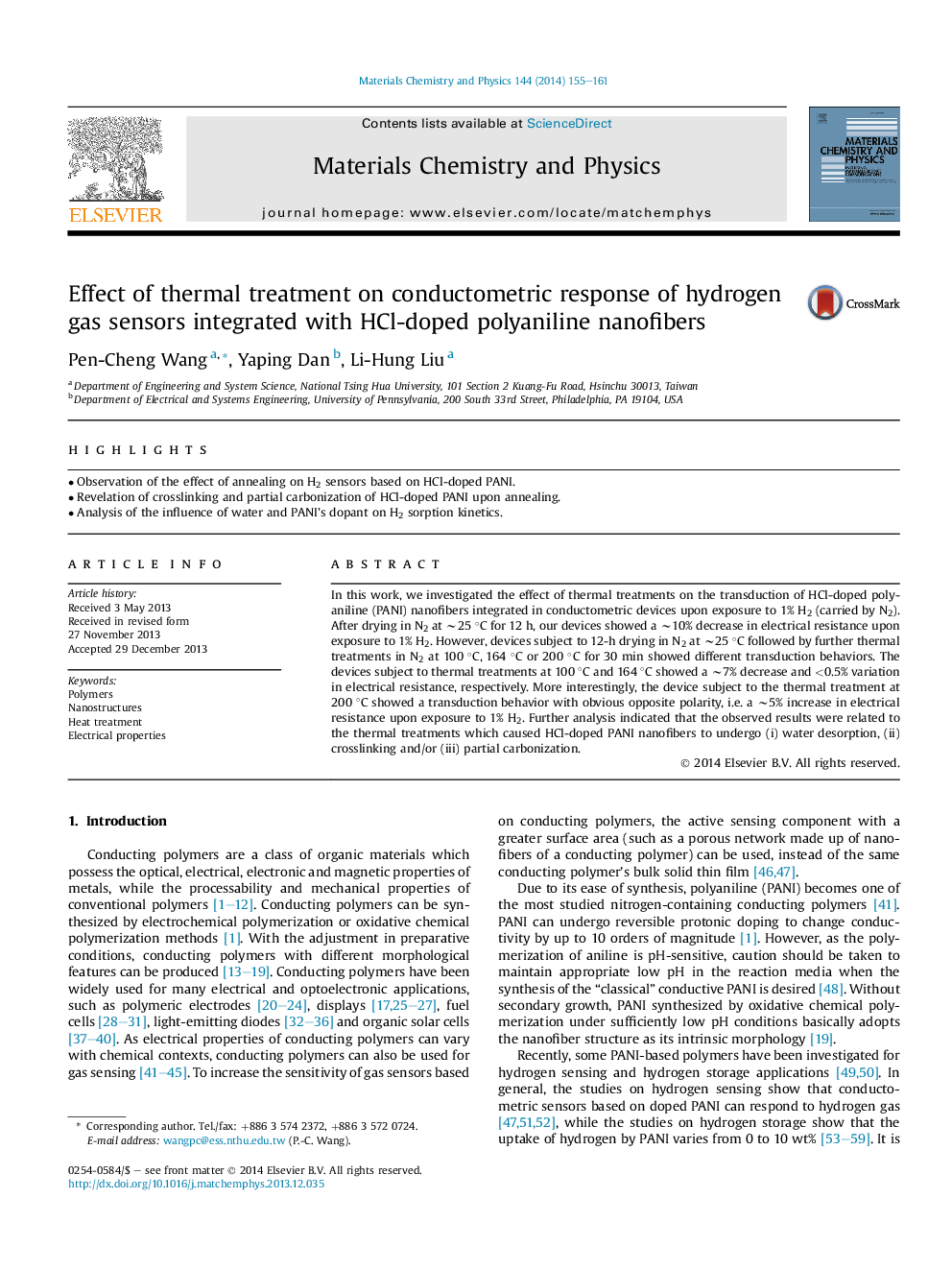| Article ID | Journal | Published Year | Pages | File Type |
|---|---|---|---|---|
| 1522065 | Materials Chemistry and Physics | 2014 | 7 Pages |
•Observation of the effect of annealing on H2 sensors based on HCl-doped PANI.•Revelation of crosslinking and partial carbonization of HCl-doped PANI upon annealing.•Analysis of the influence of water and PANI's dopant on H2 sorption kinetics.
In this work, we investigated the effect of thermal treatments on the transduction of HCl-doped polyaniline (PANI) nanofibers integrated in conductometric devices upon exposure to 1% H2 (carried by N2). After drying in N2 at ∼25 °C for 12 h, our devices showed a ∼10% decrease in electrical resistance upon exposure to 1% H2. However, devices subject to 12-h drying in N2 at ∼25 °C followed by further thermal treatments in N2 at 100 °C, 164 °C or 200 °C for 30 min showed different transduction behaviors. The devices subject to thermal treatments at 100 °C and 164 °C showed a ∼7% decrease and <0.5% variation in electrical resistance, respectively. More interestingly, the device subject to the thermal treatment at 200 °C showed a transduction behavior with obvious opposite polarity, i.e. a ∼5% increase in electrical resistance upon exposure to 1% H2. Further analysis indicated that the observed results were related to the thermal treatments which caused HCl-doped PANI nanofibers to undergo (i) water desorption, (ii) crosslinking and/or (iii) partial carbonization.
